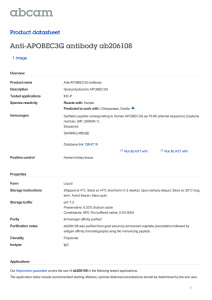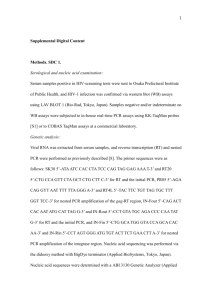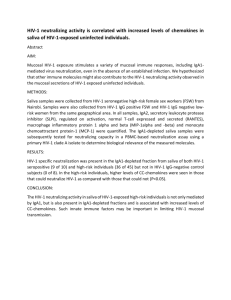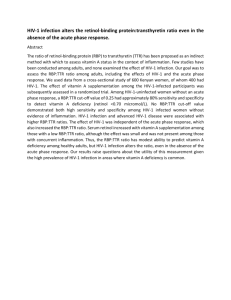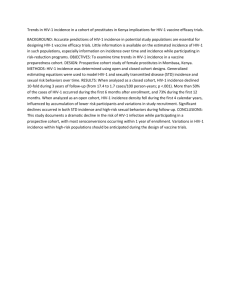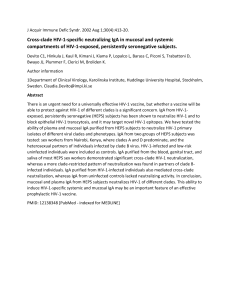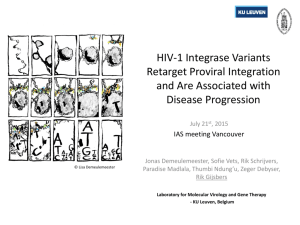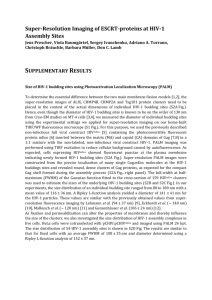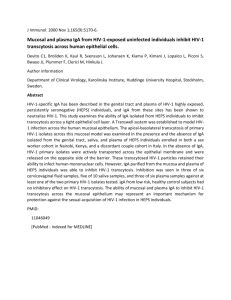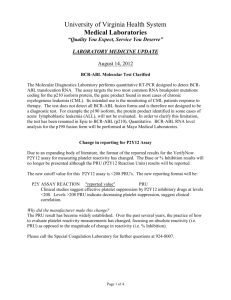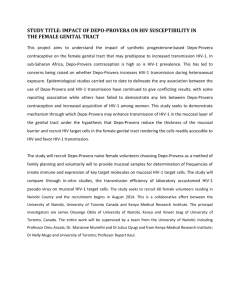Abstract - Department of Chemistry
advertisement
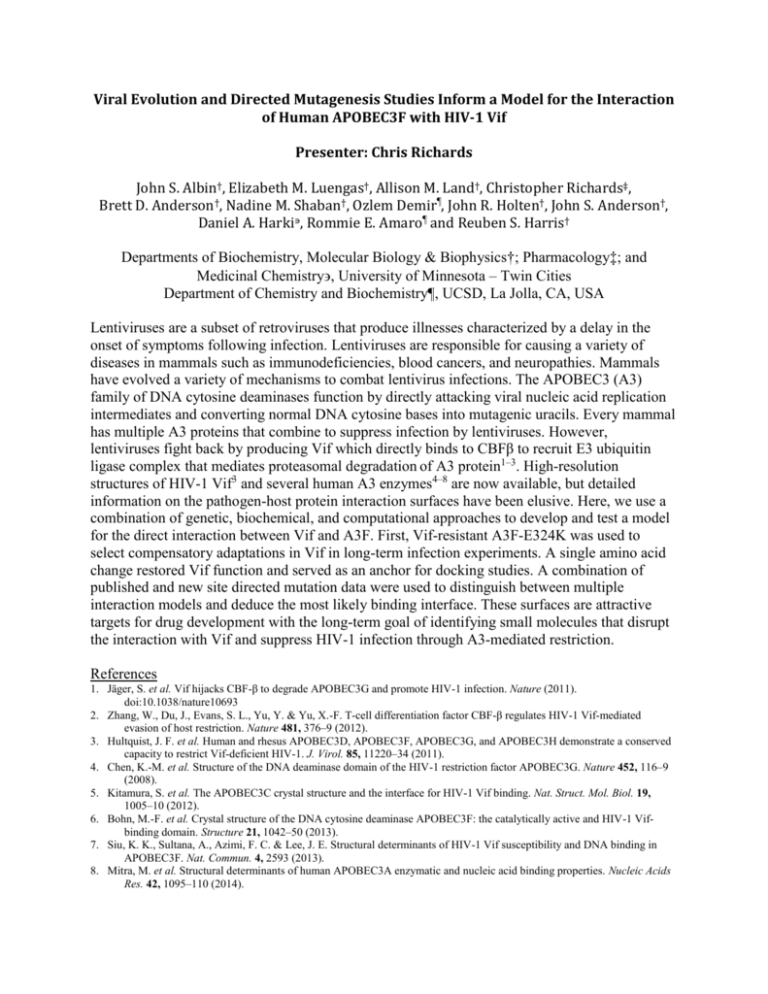
Viral Evolution and Directed Mutagenesis Studies Inform a Model for the Interaction of Human APOBEC3F with HIV-1 Vif Presenter: Chris Richards John S. Albin†, Elizabeth M. Luengas†, Allison M. Land†, Christopher Richards‡, Brett D. Anderson†, Nadine M. Shaban†, Ozlem Demir¶, John R. Holten†, John S. Anderson†, Daniel A. Harki∍, Rommie E. Amaro¶ and Reuben S. Harris† Departments of Biochemistry, Molecular Biology & Biophysics†; Pharmacology‡; and Medicinal Chemistry, University of Minnesota – Twin Cities Department of Chemistry and Biochemistry¶, UCSD, La Jolla, CA, USA Lentiviruses are a subset of retroviruses that produce illnesses characterized by a delay in the onset of symptoms following infection. Lentiviruses are responsible for causing a variety of diseases in mammals such as immunodeficiencies, blood cancers, and neuropathies. Mammals have evolved a variety of mechanisms to combat lentivirus infections. The APOBEC3 (A3) family of DNA cytosine deaminases function by directly attacking viral nucleic acid replication intermediates and converting normal DNA cytosine bases into mutagenic uracils. Every mammal has multiple A3 proteins that combine to suppress infection by lentiviruses. However, lentiviruses fight back by producing Vif which directly binds to CBFβ to recruit E3 ubiquitin ligase complex that mediates proteasomal degradation of A3 protein1–3. High-resolution structures of HIV-1 Vif3 and several human A3 enzymes4–8 are now available, but detailed information on the pathogen-host protein interaction surfaces have been elusive. Here, we use a combination of genetic, biochemical, and computational approaches to develop and test a model for the direct interaction between Vif and A3F. First, Vif-resistant A3F-E324K was used to select compensatory adaptations in Vif in long-term infection experiments. A single amino acid change restored Vif function and served as an anchor for docking studies. A combination of published and new site directed mutation data were used to distinguish between multiple interaction models and deduce the most likely binding interface. These surfaces are attractive targets for drug development with the long-term goal of identifying small molecules that disrupt the interaction with Vif and suppress HIV-1 infection through A3-mediated restriction. References 1. Jäger, S. et al. Vif hijacks CBF-β to degrade APOBEC3G and promote HIV-1 infection. Nature (2011). doi:10.1038/nature10693 2. Zhang, W., Du, J., Evans, S. L., Yu, Y. & Yu, X.-F. T-cell differentiation factor CBF-β regulates HIV-1 Vif-mediated evasion of host restriction. Nature 481, 376–9 (2012). 3. Hultquist, J. F. et al. Human and rhesus APOBEC3D, APOBEC3F, APOBEC3G, and APOBEC3H demonstrate a conserved capacity to restrict Vif-deficient HIV-1. J. Virol. 85, 11220–34 (2011). 4. Chen, K.-M. et al. Structure of the DNA deaminase domain of the HIV-1 restriction factor APOBEC3G. Nature 452, 116–9 (2008). 5. Kitamura, S. et al. The APOBEC3C crystal structure and the interface for HIV-1 Vif binding. Nat. Struct. Mol. Biol. 19, 1005–10 (2012). 6. Bohn, M.-F. et al. Crystal structure of the DNA cytosine deaminase APOBEC3F: the catalytically active and HIV-1 Vifbinding domain. Structure 21, 1042–50 (2013). 7. Siu, K. K., Sultana, A., Azimi, F. C. & Lee, J. E. Structural determinants of HIV-1 Vif susceptibility and DNA binding in APOBEC3F. Nat. Commun. 4, 2593 (2013). 8. Mitra, M. et al. Structural determinants of human APOBEC3A enzymatic and nucleic acid binding properties. Nucleic Acids Res. 42, 1095–110 (2014).
